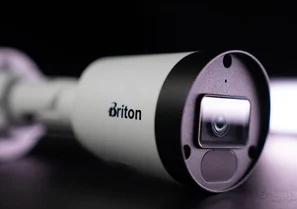CCTV cameras have become an integral part of our security systems, providing surveillance and peace of mind for both homes and businesses. However, these cameras are not without their challenges. In this article, we will explore the various risks and challenge to CCTV cameras and provide practical solutions to tackle them. By understanding these issues and implementing the recommended solutions, you can ensure the optimal performance and security of your CCTV system.

Vandalism
Vandalism is a common Challenge to CCTV cameras, especially those installed outdoors. Miscreants may attempt to dismantle the cameras, steal them, or obstruct their view by spraying paint or other means. To protect against vandalism, modern cameras come with metal casings and housings that resemble cages, making it difficult for vandals to access the camera. Additionally, securely fixing the cameras to walls with screws and fixtures adds an extra layer of protection.
Another effective solution is to install the cameras at high points, out of reach of potential vandals. Elevated positions on the property make it harder for miscreants to tamper with the cameras. By implementing these solutions, you can significantly reduce the risk of vandalism.Exposure to Harsh Weather Conditions
In regions with tropical climates or during monsoon seasons, CCTV cameras are exposed to various weather-related damages such as lightning, rain, and thunder. Rainwater can seep into the lens, causing damage, while lightning strikes pose a serious risk of short circuits and potential fires. To protect against these weather-related threats, it is crucial to take certain precautions.
During thunderstorms, it is advisable to unplug the cameras to prevent any electrical damage. For areas prone to heavy rainfall, waterproofing the cameras is essential. This can be achieved by using plastic canopies or waterproof bags specifically designed for CCTV cameras. It is also important to ensure that the mounting metals used are non-conductive to electricity, as this can attract lightning. Installing lightning surge protectors can further safeguard the cameras from voltage surges.Cybersecurity Risks
With the increasing connectivity of CCTV systems through network IPs, the risk of cyber attacks has become a pressing concern. Hackers can gain unauthorized access to cameras, decrypt safety codes, and even jam or disable the camera’s services. To protect against cyber threats, it is crucial to implement robust cybersecurity measures.
One effective solution is to enhance the network security by using advanced protocols such as WPA2 (Wi-Fi Protected Access 2). Regularly changing passwords and avoiding easily guessable passphrases adds an extra layer of protection. It is essential to keep the camera’s firmware updated to address any security vulnerabilities. By staying vigilant and proactive in maintaining cybersecurity, you can safeguard your CCTV system from potential breaches.Lack of Firmware Updates
Firmware updates are crucial for the optimal performance and security of CCTV cameras. Failure to regularly update the firmware can lead to loopholes and potential threats to the system. To ensure the stability and functionality of your surveillance system, it is important to follow certain guidelines.
Regularly check for firmware updates, typically every two to three months. Research and select the latest version that matches your camera model. Upgrading to an incompatible firmware version can cause technical conflicts. By staying up to date with firmware updates, you can address any security vulnerabilities and ensure the smooth operation of your CCTV system.Infestation of Spider Webs and Bugs
Cameras installed with floodlights for night vision are prone to attracting nocturnal bugs and insects. These pests can create cobwebs that compromise the image quality and trigger false alarms. To mitigate this issue, regular cleaning and preventive measures are necessary.
Using soft-bristled brushes, gently clean the exterior of the cameras to remove cobwebs. Insect repellents can be sprayed around the cameras to discourage bugs from approaching. However, it is important not to spray directly onto the lens. If insects continue to trigger false alarms, adjust the camera’s motion sensor sensitivity to minimize these occurrences.Reflection of Lights
Improper placement of CCTV cameras can result in reflections from surfaces such as ponds, mirrors, panels, or windows. These reflections can obscure the camera’s view and compromise image quality. To address this issue, careful consideration of camera placement is essential.
Ensure that cameras are not facing reflective surfaces directly. Partially covering the lens can also help reduce glare. By avoiding reflective surfaces, you can ensure clear and unobstructed surveillance footage, enabling proper recognition of individuals and events.

Conclusion
CCTV cameras play a crucial role in maintaining security and surveillance. However, they face various challenges that can compromise their effectiveness. By understanding these challenges and implementing the recommended solutions, you can enhance the performance and security of your CCTV system. From protecting against vandalism and harsh weather conditions to mitigating cyber risks and addressing technical issues, proactive measures can ensure the longevity and reliability of your CCTV cameras. Stay vigilant, keep your cameras updated, and invest in the necessary security measures to safeguard your property and loved ones.


